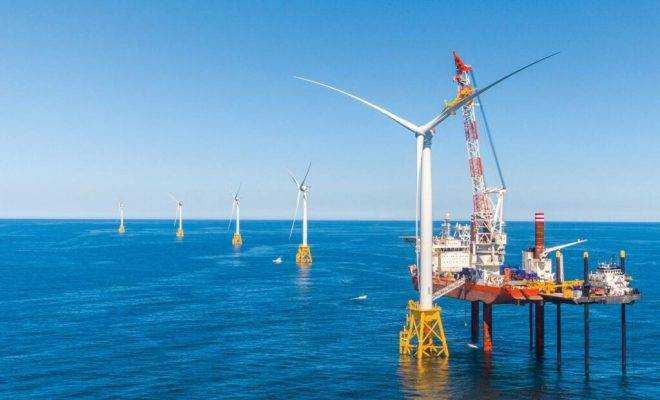The LBI cultural fabric is part of Surf City’s opposition to offshore wind farms

[ad_1]
IN THE AIR: While a decision by the State Utilities Board on granting approval for a second wind farm is expected in June, concerns about the impact the projects will have on Jersey Shore communities continue to grow. (Photo courtesy of Ørsted)
Citing socio-economic / cultural, environmental and safety concerns, Surf City Councilor Peter Hartney wrote the borough’s objections to the Atlantic Shores wind farm project to the Federal Office of Ocean Energy Management while providing comments on the Ocean Wind Project Environmental Impact Statement. .
“Each of these categories is a matter of short and long term concern,†he wrote in his April 27 letter.
Atlantic Shores Offshore Wind is set to build the state’s second largest wind farm, partly off the coast of Long Beach Island. The nearest western or coastal limit to the rental site is 10 miles from Barnegat Light and 9 miles from Holgate. The rental area has the potential to generate 3 gigawatts of offshore wind power. Atlantic Shores plans to begin onshore substation construction in 2024 and offshore construction by 2025.
The project is a 50/50 partnership between Shell New Energies US LLC and EDF Renewables North America. It was formed in December 2018 to co-develop nearly 183,353 acres of leased ocean area on the Outer Continental Shelf, located in the New Jersey Wind Power Zone.
Just south of the proposed Atlantic Shores wind farm is the Ocean Wind project, owned and developed by Ørsted with support from PSEG. This wind farm is expected to be operational in 2024 and would produce enough electricity to power more than 500,000 homes, according to the Ørsted website.
Part of the socio-economic concern includes a proposed wind farm as close as 9 miles to the island, the turbine height of 850 feet and a total of around 250 turbines, according to Hartney’s letter. He also cited the industrialization of the immediate offshore area and the negative impact on the tourism industry of $ 41 billion per year.
“Commercial fishing is already limited by quotas, etc., and the economic impact of the proposed projects has not been fully studied and has, to date, been presented by Atlantic Shores as having no impact on industry once the project is completed without considering the decades of impact that the construction phase of the projects will have on the commercial fishing industry, â€he wrote in the letter.
He also said the proposed area is near or adjacent to the clam fishing grounds, which are home to more than a third of the clams for the soup and chowder industry.
“There is a strong and unexamined impact on the cultural fabric of LBI and the entire Jersey Shore, as the fishing industry has been part of the region’s cultural fabric since time immemorial,” Hartney wrote. “Thus, the adverse economic impacts that these projects would cause to the fishing industry will have significant negative ramifications for the local culture – with the loss of the fishing industry there will be a loss of cultural identity and means of subsistence. “
Addressing environmental concerns, he noted that LBI would be affected by both the Atlantic Shores project and the Ocean Wind transmission lines, which would have to run the entire length of the island before connecting to the power grid of the island. former Oyster Creek power station.
“When taken in combination, (it) will transmit more electrical energy to land than any previous project. So, the impact of electromagnetic fields from power transmission lines on marine life needs to be well studied, â€Hartney wrote, saying the best conclusion is that more information is needed.
Additional environmental issues include disruption of flooding at sea due to construction – particularly the impact on benthic life in the area, he said. Hartney also noted that adequate studies on effects on Atlantic right whales, gray seals, dolphins and migratory birds have not been reviewed.
Finally, Hartney said aging turbines and the decommissioning of structures with regard to future environmental impact were not discussed, “including how Atlantic Shores and Ocean Wind have proposed to address the issue. . “
Safety concerns include the Coast Guard’s ability to perform a rescue in the area of ​​a wind farm, the impact on the Joint Base McGuire-Dix-Lakehurst flight pattern, as well as depth and safety transmission lines, according to Hartney. He added transmission lines for Block Island, Rhode Island, already had to be re-buried.
“(We) respectfully request that instead of rushing towards approval and construction under the guise of COVID-19 restrictions, that the approval process be slow, a thorough critical study of the concerns of all those affected. by the proposed projects is understood for the benefit of all, not just great energy, â€he concluded.
– Gina G. Scala
ggscala@thesandpaper.net
[ad_2]
